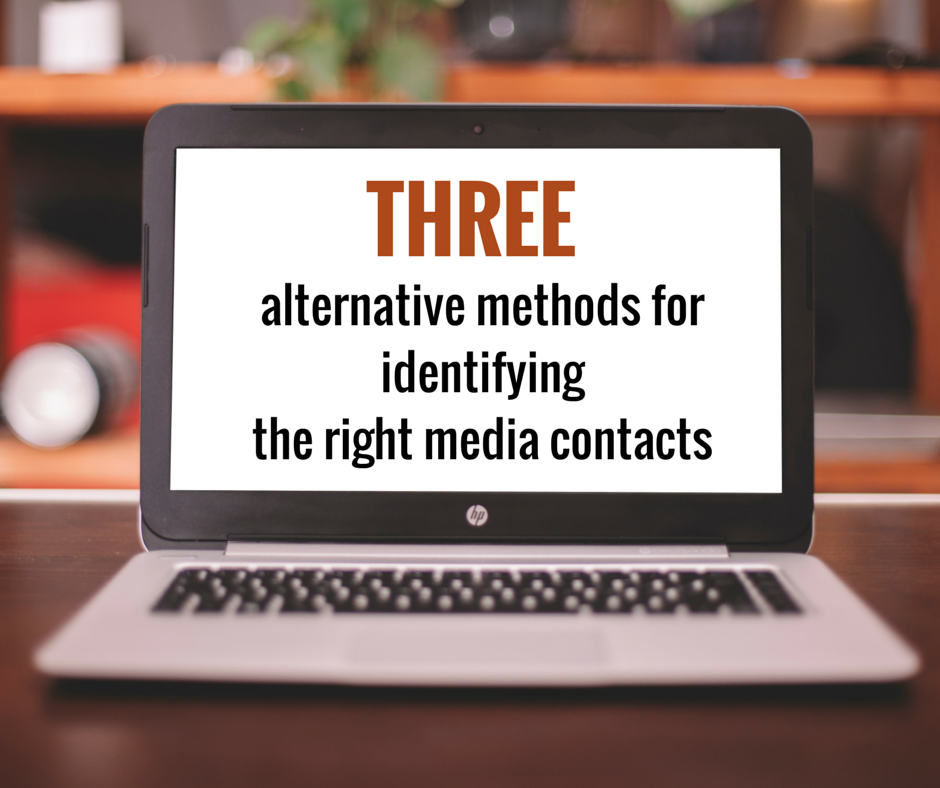As new PR pros, you’ve likely sat through a webinar or listened to some sort of training for PR software and services such as Cision or Vocus.
 While an extremely useful tool for building media lists and identifying media contacts to reach out to with the awesome story you have to tell, don’t fall into the trap of letting these portals be the be-all and end-all of how you determine who you’re going to pitch or share your news release with.
While an extremely useful tool for building media lists and identifying media contacts to reach out to with the awesome story you have to tell, don’t fall into the trap of letting these portals be the be-all and end-all of how you determine who you’re going to pitch or share your news release with.
As an entry-level PR pro at my first job right out of college, I was asked to build a list of media contacts that might be interested in sharing details of the large-scale art installations at an upcoming music festival. Of course, my list included the likes of the local weekly alternative publications and those already who had shown an interest in the music festival.
But it also included Rolling Stone, and Forbes.
My supervisor – and mentor to this day – immediately questioned me on this. Why would Rolling Stone, let alone Forbes, write about a collection of art installations? That doesn’t exactly fall into their realm of the publications’ typical coverage topics.
But I stood my ground because I knew I had done my research. Sure enough, Rolling Stone was the first-ever national placement of my career on the art installations of an electronic dance music festival.
What’s the lesson here? I didn’t use Cision to find these contacts.
Here are three alternative methods for identifying the right media contact for your pitch or news release:
Use the outlet’s search function.
Admittedly, this is easier when you know what outlet you’re hoping to see your client’s story featured. For example, you know you have an excellent finance story.
Head to Fortune.com (or whatever outlet you’ve identified) and search for topics similar to your client. Is the pitch on the state of the economy? On an innovative payment system? Search using these terms to identify who has covered this type of story for the outlet in the past and go from there.
Take to Twitter.
More times than not, you will find a reporter using the method above and find that their email address is as elusive as the golden snitch. This is where social media can be an excellent tool to identify a media contact’s info.
A simple tweet to the journalist giving them a quick synopsis that you want to reach out to them with a story idea and a request to have them DM you their email address can work magical wonders.
Additionally, consider using Twitter to cross-check that the journalist is the right fit. Often times, you’ll find that their designated beat / what they cover is referenced in their Twitter bio.
Ask another reporter.
Read: this is not to say email or call a random reporter and ask them who you should pitch.
Rather, this is a recommendation to never take no for an answer. As part of pitching or sending a news release, there’s the follow-up phone call. If a reporter turns you down, don’t let that be the final word. Ask them, “Do you think this might a better fit for someone else at the outlet?”
Remember that the person on the other end of the phone is in fact a person. They are likely willing to help you and point you in the right direction.
And if not, the worst they can tell you is no.
These are just a few tried and true methods I’ve found to be helpful when Cision or Vocus just doesn’t have the answers you’re looking for. Do you have another tool or route you’ve taken to find a media contact? I’d love to hear it! Share with me on Twitter at @shandihuber.
 Shandi Huber is a senior account executive at Wordsworth Communications, a public relations agency in Cincinnati, Ohio. An enthusiast for all social media platforms, you can often find her pinning her dream closet on Pinterest or posting photos of her new puppy on Instagram. Connect with Shandi on LinkedIn and Twitter(@shandihuber).
Shandi Huber is a senior account executive at Wordsworth Communications, a public relations agency in Cincinnati, Ohio. An enthusiast for all social media platforms, you can often find her pinning her dream closet on Pinterest or posting photos of her new puppy on Instagram. Connect with Shandi on LinkedIn and Twitter(@shandihuber).
